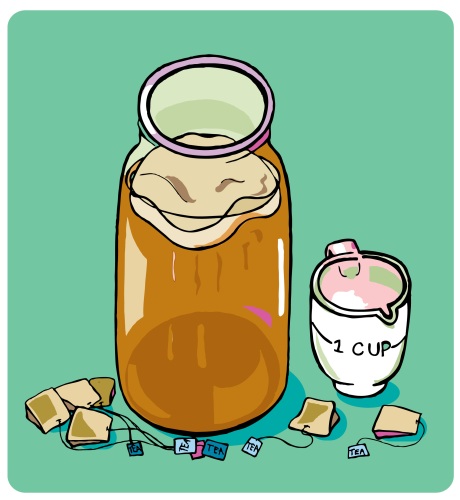 Cast Iron pans, oh how I love you! I use my cast iron pans everyday-twice a day. I find them invaluable for their versatility and even, consistent heating. They are definitely in the top five of my most essential cooking tools. (In case you’re wondering, the other four are: a wooden spoon, big pot, sharp knife, and measuring cup.)
Cast Iron pans, oh how I love you! I use my cast iron pans everyday-twice a day. I find them invaluable for their versatility and even, consistent heating. They are definitely in the top five of my most essential cooking tools. (In case you’re wondering, the other four are: a wooden spoon, big pot, sharp knife, and measuring cup.)
Cast Iron has been a basic and indispensable cooking implement for hundreds of years but I’ve come to realize a lot of folks are unfamiliar with basic care and upkeep. My Mom told me that she “ruined” the pans she received for her wedding by soaking them in water. I put “ruined” in quotes because you can actually revive rusted pans. The Kitchn has a great article on how to re-season your pans. Some basic rules for cast iron:
- Keep it greasy! (well-seasoned pans are non-stick and have a shiny surface)
- Don’t clean it with soap (it removes the seasoning)
- Don’t put it in the dish-washer
- Don’t use steel wool (use salt as an abrasive)
Cast Iron pans are pretty cheap, especially if you find one at a thrift store or yard sale. I just picked one up for $20 at flea market here in Berkeley. Plus, they’ll last a lifetime and can be passed on from generation to generation.
 One of my favorite things to cook in my small cast iron pan in cornbread. Cornbread cooks so evenly and browns beautifully in cast iron and it somehow feels more authentic (I imagine southern ladies of olden’ times making their cornbread the same way.) The cornbread recipe that I’ve been using is both simple and delicious. It comes together quickly and is easy whip up while you’re in the midst of cooking the rest of your meal.
One of my favorite things to cook in my small cast iron pan in cornbread. Cornbread cooks so evenly and browns beautifully in cast iron and it somehow feels more authentic (I imagine southern ladies of olden’ times making their cornbread the same way.) The cornbread recipe that I’ve been using is both simple and delicious. It comes together quickly and is easy whip up while you’re in the midst of cooking the rest of your meal.
- 2 cups cornmeal
- 3/4 cup all-purpose flour
- 3 tsp baking powder
- 1 tsp salt
- 1 1/2 cups milk
- 2 eggs
- 5 tbs melted butter
- Pre-heat oven to 400 F
- Combine all the dry ingredients
- In another bowl whisk eggs, milk, and butter together
- Combine the wet and dry ingredients until well-blended.
- Cook for 25 minutes (or until a knife comes out clean and the top is slightly brown)












